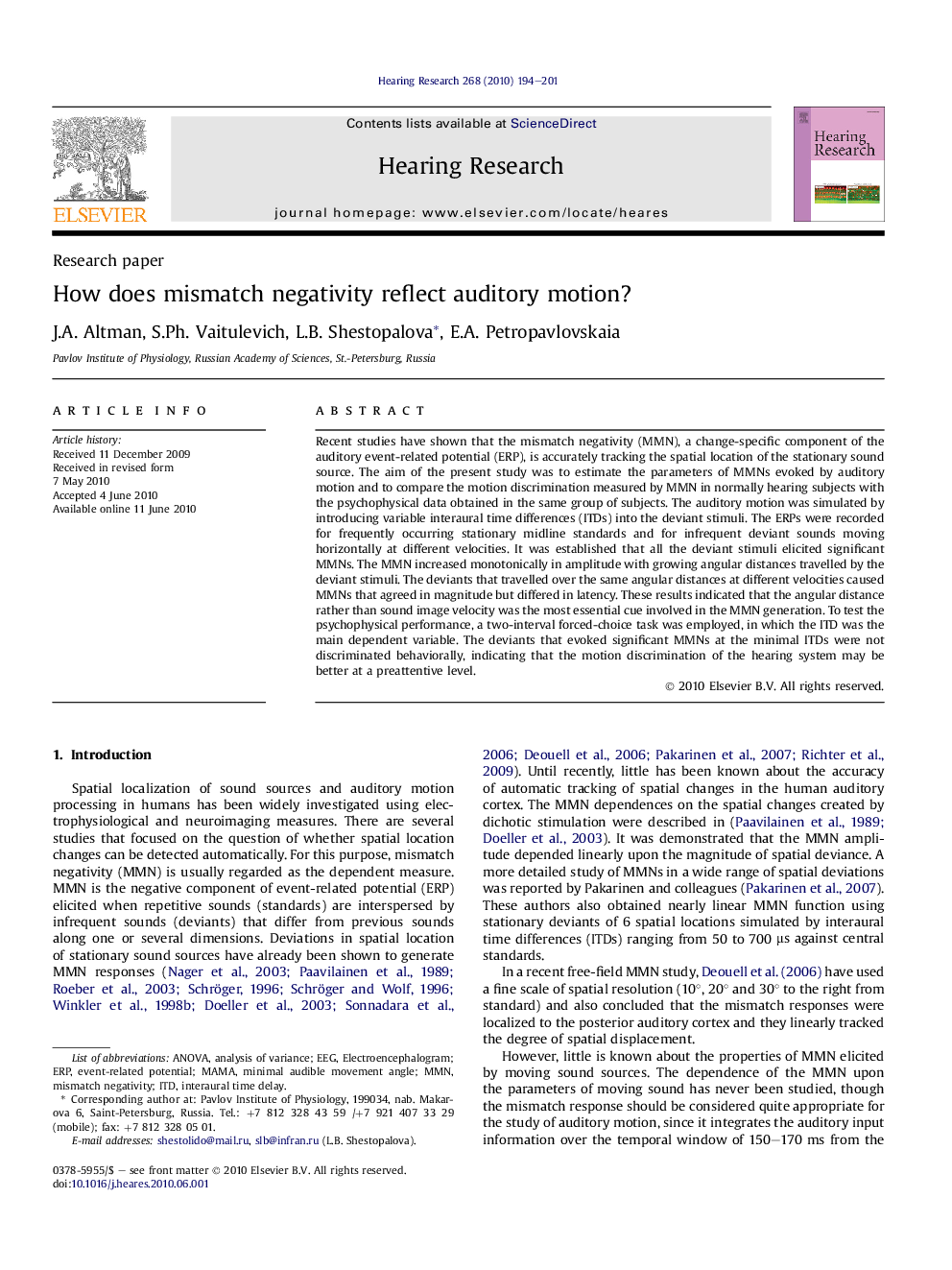| Article ID | Journal | Published Year | Pages | File Type |
|---|---|---|---|---|
| 4355617 | Hearing Research | 2010 | 8 Pages |
Recent studies have shown that the mismatch negativity (MMN), a change-specific component of the auditory event-related potential (ERP), is accurately tracking the spatial location of the stationary sound source. The aim of the present study was to estimate the parameters of MMNs evoked by auditory motion and to compare the motion discrimination measured by MMN in normally hearing subjects with the psychophysical data obtained in the same group of subjects. The auditory motion was simulated by introducing variable interaural time differences (ITDs) into the deviant stimuli. The ERPs were recorded for frequently occurring stationary midline standards and for infrequent deviant sounds moving horizontally at different velocities. It was established that all the deviant stimuli elicited significant MMNs. The MMN increased monotonically in amplitude with growing angular distances travelled by the deviant stimuli. The deviants that travelled over the same angular distances at different velocities caused MMNs that agreed in magnitude but differed in latency. These results indicated that the angular distance rather than sound image velocity was the most essential cue involved in the MMN generation. To test the psychophysical performance, a two-interval forced-choice task was employed, in which the ITD was the main dependent variable. The deviants that evoked significant MMNs at the minimal ITDs were not discriminated behaviorally, indicating that the motion discrimination of the hearing system may be better at a preattentive level.
